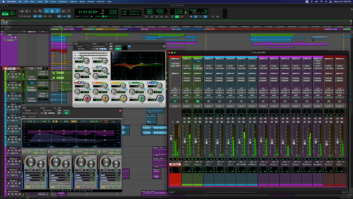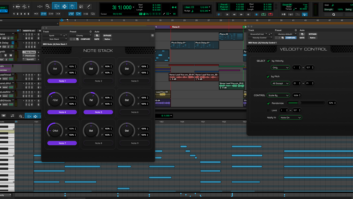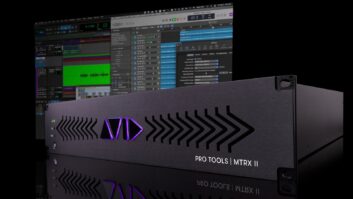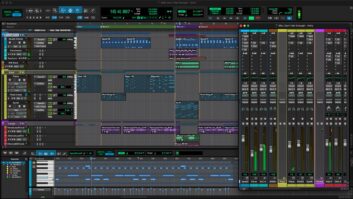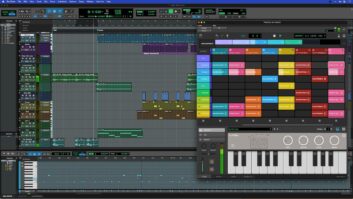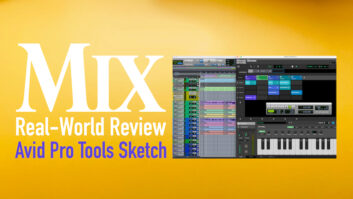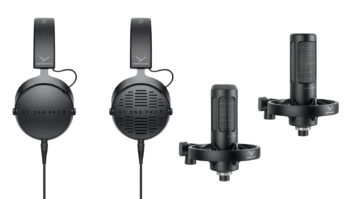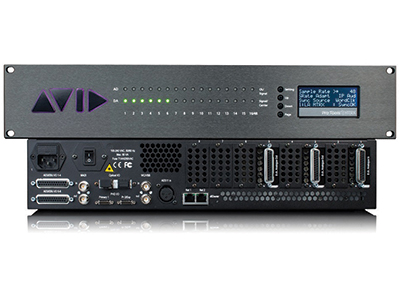
Soft-announced at AES last September and now close to release is the Avid Pro Tools | MTRX Interface. This is the highend box that many have been waiting for, but is it the “everything I/O” that fits all users? All needs? I have always thought it odd that Merging Technologies, DAD and others have offered high-end I/O solutions that have been embraced by scoring mixers, classical and post-production engineers, and other high-enders, yet Avid has always chosen to stick to the basic architecture that made the company ubiquitous. If you look at the evolution from the 888/24, to the 192, then HD I/O over almost 20 years, it’s mostly been MOTS—though significantly more capable. But not anymore. In fact, DAD (Digital Audio Denmark) makes the converters and preamps for MTRX.
The MTRX opens up a whole new world for those who want to customize their rig or just expand to new formats, configurations and capabilities. While it’s not an “open” platform for outsiders, it is open to many more options for those who want to keep their gear in line with their DAW software.
It all starts with the MTRX chassis, which ships with eight empty card slots but comes chock full of I/O and more. Onboard are eight AES pairs on DB25s, dual power supplies (great idea), support for 44.1-384 kHz, plus DSD 64/DSD 128 with high precision internal clock and PLL, Word Clock/video black burst I/O via BNC connectors, AES11 input, and two 32-channel DigiLink connectors. On the audio side, you can load up to six slots with 8-channel AD or DA cards for up to 48 channels total, plus two other slots for digital I/O—more than ever available on a single Pro Tools interface.
Compare and match MTRX to an HD I/O system where you’d have to buy three interfaces, two with 16 I/Os each, plus a third for the extra eight channels, and the initial sticker shock gets easier to swallow. You can also choose DAD preamp/converter input cards that can be controlled directly from Pro Tools software. How’s the quality? I’ve heard the DAD preamps and converters first-hand, and they are spectacular. But what if you’re in AES, or MADI-land? You don’t need to buy a card because MTRX comes standard with 64 I/O channels of MADI, and an 8-line AES3 interface with 16 I/O channels. Then there are options for Dante, and 3G-SDI cards.
Also included is the DADman software, which helps expand MTRX as a monitor controller. This can be from the DADman software itself, a Pro Tools | S6, or other Eucon-enabled control surfaces. Then there’s Pro | Mon 2, which offers control for monitoring, talkback and summing; and fold-down control for mono, stereo, 5.1, 7.1, 9.1 or a 64-channel audio mix. Mon 2 offers a matrix capacity of up to 1,500 x 1,500 crosspoints, so, for example, you could use it to sum stems and sources to feed monitor outputs as a 256 x 32 summing mixer, with room to spare.
But the real power of MTRX is in the cards, and there are plenty. You can create up to a 64-channel interface in a single box, including all-digital I/O, 48 analog plus 16 digital or any combo in between. But there’s much more, and here’s the card breakdown.
The MTRX 8 Line Level AD Card ($2,099); MTRX 8 DA Card ($2,099); MTRX 2 Mic/Line AD Card with two channels of analog inputs and preamps ($1,275); MTRX 8 Mic/Line Pristine AD Card with eight preamps ($2,999); MTRX 8 AES3 I/O Card with eight AES3 I/Os (16 channels) and built-in SRC ($1,649); MTRX Dual SDI/HD/3G Card with 2 x 16 channels of SDI/HD/3G connections (embed/de-embed) and built-in SRC ($2,749); and the Pro Tools | MTRX Dual MADI I/O Card with 128 channels of MADI optical MADI IO ($2,099).
So there you have it. The base unit is $4,499 (plus cards) and offers more I/O in less space (which is great for anyone), plus an à la carte menu of options that covers many user’s dream setups. Also on the plus side is MTRX’s no-worry compatibility with Pro Tools software, which is growing at an ever-increasing rate.
So is it for you? Get out your calculator, add up the prices plus the Pros and Cons of an all-in system, and only you can make the call. From here, it looks like a giant leap in the right direction for our industry’s dominant DAW.
